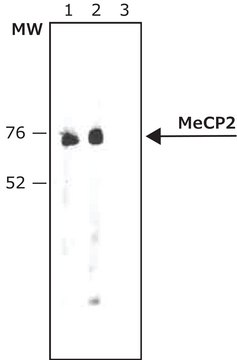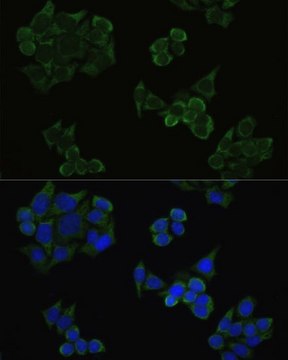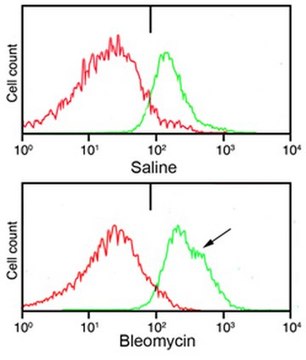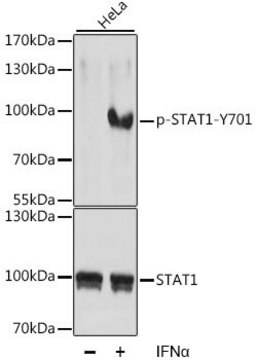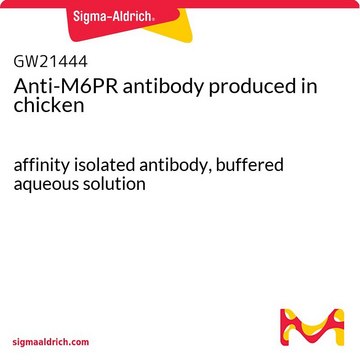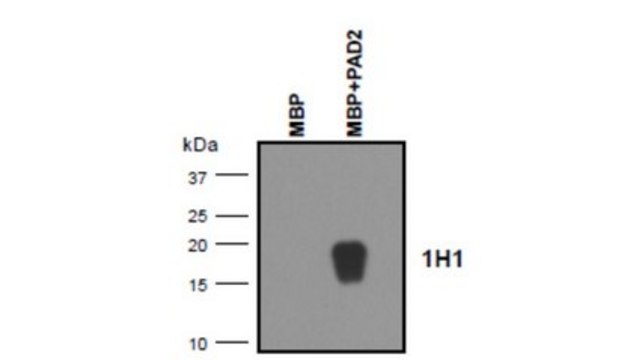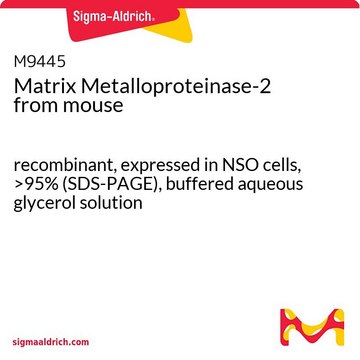MABF935
Anti-MPR300/IGF-2R/CD222 Antibody, clone 2C2
clone 2C2, from mouse
Synonym(s):
Cation-independent mannose-6-phosphate receptor, 300 kDa mannose 6-phosphate receptor, CD222, CI Man-6-P receptor, CI-MPR, IGF-II receptor, Insulin-like growth factor 2 receptor, Insulin-like growth factor II receptor, M6P/IGF2 receptor, M6P/IGF2R, M6P-R
About This Item
Recommended Products
biological source
mouse
Quality Level
antibody form
purified immunoglobulin
antibody product type
primary antibodies
clone
2C2, monoclonal
species reactivity
human
technique(s)
affinity binding assay: suitable
immunocytochemistry: suitable
immunohistochemistry: suitable
western blot: suitable
isotype
IgG1κ
NCBI accession no.
UniProt accession no.
shipped in
dry ice
target post-translational modification
unmodified
Gene Information
human ... IGF2R(3482)
General description
Specificity
Immunogen
Application
Affinity Binding Assay: A representative lot competed against IGF-II, but not pentamannose 6-phosphate (PMP), for binding immobilized IGF-II receptor (MPR) (Braulke, T., et al. (1988). Biochem. Res. Commun. 150(3):1287-1293).
Western Blotting Analysis: A representative lot was labeled with 125I and detected the ~300 kDa IGF-II receptor (MPR300) in lysates from HeLa cells and primary human macrophages (Pohl, S., et al. (2010). J. Biol. Chem. 285(31):23936-23944).
Immunohistochemistry Analysis: A representative lot detected hepatocyte membrane and cytoplasmic M6P/IGF-2R immunoreactivity in normal human liver frozen sections. A reduced immunostaining of hepatocytes restricted to the sinusoidal part of the cell membrane and an increased signals in perisinusoidal cells was seen in cirrhotic livers (Sedlaczek, N., et al. (2003). Br. J. Cancer. 88(5):733-739).
Immunocytochemistry Analysis: A representative lot immunostained late endosomes in 2% paraformaldehyde-fixed, 0.01% saponin-permeabilized human fibroblasts (Bakker, A.C., et al. (1997). J. Cell Sci. 110 (Pt 18):2227-2238).
Inflammation & Immunology
Vesicular Trafficking
Quality
Immunocytochemistry Analysis: A 1:250 dilution of this antibody detected MPR300/IGF-2R/CD222 in HeLa cells.
Target description
Physical form
Storage and Stability
Handling Recommendations: Upon receipt and prior to removing the cap, centrifuge the vial and gently mix the solution. Aliquot into microcentrifuge tubes and store at -20°C. Avoid repeated freeze/thaw cycles, which may damage IgG and affect product performance.
Other Notes
Disclaimer
Not finding the right product?
Try our Product Selector Tool.
Storage Class Code
12 - Non Combustible Liquids
WGK
WGK 2
Flash Point(F)
Not applicable
Flash Point(C)
Not applicable
Certificates of Analysis (COA)
Search for Certificates of Analysis (COA) by entering the products Lot/Batch Number. Lot and Batch Numbers can be found on a product’s label following the words ‘Lot’ or ‘Batch’.
Already Own This Product?
Find documentation for the products that you have recently purchased in the Document Library.
Our team of scientists has experience in all areas of research including Life Science, Material Science, Chemical Synthesis, Chromatography, Analytical and many others.
Contact Technical Service